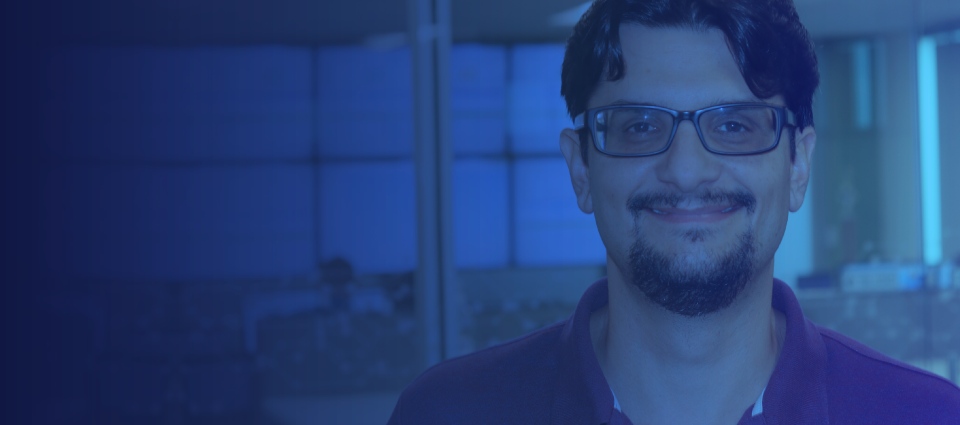Abstract: This article discusses the importance of innovation for businesses and the need for a more practical approach to fostering innovation within organizations. It explores the potential of Human-Centered Design (HCD) and Design Thinking as powerful tools to help teams build an innovation mindset and increase their chances of innovating successfully. The article delves into HCD and Design Thinking principles and their applications beyond product design a. It emphasizes cultural and mindset shifts required fully embrace these methodologies and avoid the trap of “Innovation Theater.”
Successful cases demonstrating the potential of HCD and Design Thinking for general innovation are mentioned, including the successful use of the LUMA System of Innovation by Stefanini NA and APAC, both internally and to enhance the value we deliver to our clients.
Innovation is a driving force behind successful businesses, and it is more important than ever for organizations to develop an innovative mindset to stay competitive in today’s rapidly evolving landscape.
Ten years ago, research showed that innovation is a top priority for business leaders in their growth strategy (PwC, 2013). However, the same study found that a fraction of executives was satisfied with their organization’s innovation performance, indicating a significant gap between aspirations and outcomes. This highlights the need for a more practical approach to fostering innovation and is still valid.
A more recent study conducted by McKinsey & Company (2018) supports the importance of innovation for business growth and success. The study found that companies prioritizing innovation tend to significantly outperform their industry peers regarding revenue growth, profitability, and total shareholder returns. Additionally, according to Strategy&, PwC’s strategy consulting arm, companies that aspire to the highest level of innovation leadership today need to excel at every aspect of innovation and push the boundaries of the customer experience (Strategy&Business, 2018). However, in specific verticals, the investment levels remain low (Strategy + Business, 2020).
This article explores the potential of Human-Centered Design (HCD) and Design Thinking as powerful tools to help teams build an innovation mindset and increase their chances of innovating successfully. By delving into HCD and Design Thinking principles and their applications beyond product design, we will discuss how to leverage these approaches and foster a culture of innovation within organizations.
Human-Centered Design and Design Thinking are traditionally used in the realm of product design with a focus on believing all problems are solvable and that the people who face those problems are the ones who hold the key to their answer (IDEO, 2015). However, these methodologies can also be applied to a broader range of innovation endeavors that need constant creativity and problem-solving (Brown & Wyatt, 2010).
By fostering a deep understanding of the needs and motivations of end-users and all stakeholders involved and by creating an ideation environment with the right people in the room enabled to have an equal voice, HCD and Design Thinking can help teams navigate the complexities of innovation and make informed, data-driven decisions. Another critical aspect of these methodologies is learning the value of an iterative prototyping and user testing approach. This enables teams to refine their solutions based on real-world feedback continuously.
Numerous studies and real-world examples support the hypothesis that HCD and Design Thinking principles can help fill this gap in successful innovation. These approaches emphasize empathy, experimentation, and iteration, which can help teams identify opportunities, generate new ideas, and rapidly test and refine solutions (Kolko, 2015). However, it is essential to recognize that implementing HCD and Design Thinking techniques is not a panacea for all innovation challenges. A crucial aspect of their success lies in addressing the cultural and mindset shifts required to embrace these methodologies fully.
Without addressing the necessary cultural changes, organizations risk falling into the trap of “Innovation Theater” – a term mentioned by Steve Blank (2019) to describe the superficial adoption of innovation practices without making any meaningful impact on business outcomes. Innovation Theater often involves high-profile initiatives, workshops, and investments that create the appearance of innovation but lack the depth and commitment needed to drive real change. Some authors even argue people’s biases and entrenched behaviors get in the way (Liedtka, 2018). A significant reason for this is that HCD and Design Thinking methodologies often conflict with traditional business practices, such as waterfall project management and hierarchical decision-making structures. These older approaches tend to focus on rigid planning, top-down directives, and a fear of failure, which can stifle the experimentation, collaboration, and rapid iteration (Ries, 2011) central to HCD or Design Thinking.
To avoid Innovation Theater and successfully implement HCD and Design Thinking for innovation, organizations do not necessarily need to move away from waterfall or hierarchy—there are situations where these are still optimal—but they must foster a culture that encourages empathy, collaboration, experimentation, and continuous learning (Kolko, 2015). This includes creating an environment where failure is seen as an opportunity to learn and iterate rather than a threat to avoid. Embracing these cultural shifts may require challenging and rethinking long-held assumptions and adapting practices and organizational structures that can hinder the practical application of HCD and Design Thinking principles. By doing so, organizations can unlock the full potential of these methodologies as catalysts for innovation and drive meaningful change across their operations.
Several successful cases demonstrate the potential of HCD and Design Thinking for general innovation, extending beyond just product or service design. Some companies use it themselves and create and share frameworks for everyone to use. A good example is SAP AppHaus Toolkit, a free resource to help organizations foster a human-centered approach to innovation (SAP AppHaus, 2021).
The LUMA Institute is another organization that champions using HCD and Design Thinking for innovation.
Stefanini NA and APAC embrace the LUMA System of Innovation to drive innovation from a human-centered perspective. The LUMA System is a flexible framework incorporating 36 design thinking techniques (LUMA Institute, 2021), allowing our teams to address complex challenges focusing on empathy, collaboration and data-driven decision-making. By adopting this system, we aim to foster a culture of innovation that begins within the organization and is perceived through to our clients, empowering employees to generate creative solutions that meet the needs of their stakeholders and end-users.
Through implementing HCD and Design thinking practices, Stefanini NA and APAC are enhancing their offerings, improving internal processes, and fostering a continuous improvement mindset.
In conclusion, the core concepts of Human-Centered Design and Design Thinking, independent of individual frameworks or methodologies, are undoubtedly valuable tools for organizations seeking to develop an innovation mindset and succeed in today’s competitive business environment.
At Stefanini NA and APAC, we are walking the talk, actively embracing a human-centered approach to innovation and experiencing the benefits of it throughout our transformation. This shift is not only improving our internal processes and fostering a culture of continuous learning but also visibly enhancing the value we deliver to our clients. By championing these core concepts and sharing our experiences, we aim to inspire other organizations to adopt similar practices and unlock the full potential of HCD and Design Thinking as catalysts for meaningful innovation and growth.
Author: Danilo Almeida has over 15 years experience in software development. As innovation and automation senior product manager at Stefanini Group, he spearheaded software development and innovation in numerous global projects. Recently, he undertook the responsibility of leading the transformation and design consultancy practice at his branch.
His primary goal is to expand his knowledge in areas like AI and Machine Learning, Design and Innovation, and Project Management. His areas of expertise include Web Development, Project Management, Design Thinking, and Innovation. When he’s not creating cutting-edge solutions, Danilo enjoys spending time creating music.
References:
Blank, S. (2019). Innovation Theater. Retrieved from:
https://steveblank.com/2019/10/15/between-a-rock-and-a-hard-place-organizational-and-innovation-theater/
https://hbr.org/2019/10/why-companies-do-innovation-theater-instead-of-actual-innovation
Brown, T., & Wyatt, J. (2010). Design Thinking for Social Innovation. Stanford Social Innovation Review. Retrieved from:
https://ssir.org/articles/entry/design_thinking_for_social_innovation
IDEO. (2015). The Field Guide to Human-Centered Design. Retrieved from:
https://www.designkit.org/resources/1.html
Kolko, J. (2015). Design Thinking Comes of Age. Harvard Business Review. Retrieved from:
https://hbr.org/2015/09/design-thinking-comes-of-age
Liedtka, J. (2018). Why Design Thinking Works. Harvard Business Review. Retrieved from:
https://hbr.org/2018/09/why-design-thinking-works
LUMA Institute. (2021). LUMA System of Innovation. Retrieved from
https://www.luma-institute.com/about-luma/luma-system/
McKinsey & Company. (2018). The Innovation Commitment. Retrieved from:
https://www.mckinsey.com/business-functions/strategy-and-corporate-finance/our-insights/the-innovation-commitment
PwC. (2013). Breakthrough Innovation and Growth. Retrieved from
https://www.pwc.co.uk/assets/pdf/achieving-business-growth.pdf
Ries, E. (2011). The Lean Startup. Retrieved from:
http://www.startuplessonslearned.com/
SAP AppHaus. (2021). SAP AppHaus Toolkit. Retrieved from:
https://apphaus.sap.com/toolkit
Strategy&. (2018). Global Innovation Survey 2020. Retrieved from:
https://www.strategyand.pwc.com/gx/en/insights/innovation1000.html
https://www.strategy-business.com/feature/What-the-Top-Innovators-Get-Right
Strategy+Business. (2020). Amping up innovation. Retrieved from:
https://www.strategy-business.com/article/Amping-up-innovation




















